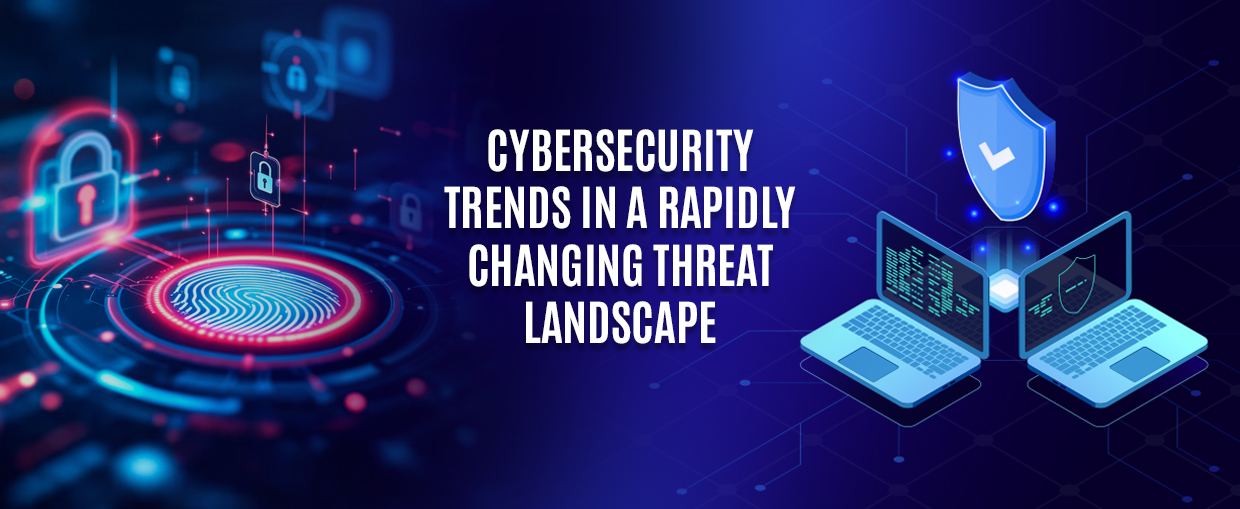Matter vs Thread are terms related to new compatibility standards for the smart devices market. You will start exploring more about it as you read on.
Although advanced technology simplifies everyday living with so many disruptive products in the marketplace, many challenges remain. Smart home devices are the newest craze and smart homes are being adopted globally in a massive way. A McKinsey report on the connected home market throws light on the multitude of issues that need resolution.
What Makes Matter vs Thread a Necessity?
Well, who wants to deal with the hassle of determining the compatibility of a device within your existing ecosystem of devices? It requires careful study of the documentation to understand where the device fits into the compatibility puzzle.
If the device happens to be compatible, then you’re in luck. Setting it up is usually a straightforward process. You’ll likely need to download another manufacturer’s application, go through configuration steps, and connect it to your preferred ecosystem like Amazon Alexa, Google Home, or Apple HomeKit.
However, you might come across certain limitations where a few features of the device can only be accessed through the manufacturer’s app and not from other systems. Once you have everything set up, you may also encounter issues with different manufacturer systems not playing nicely with each other. This can lead to unresponsive devices, lag, or even device malfunctions.
Don’t be surprised if you find yourself stranded in the garage due to a glitchy smart garage door or unable to turn on the lights. The problem of connectivity plagues the smart home technology and smart home automation space creating a blockade between consumers and their connected devices, machines between each other, and producers and their revenues. Wouldn’t it be great if all Internet of Things (IoT) enabled devices followed a common communication protocol and seamlessly worked together?
That’s what Matter vs Thread is all about. Matter forayed into this mess of the smart home technology landscape by ensuring interoperability, security, and privacy of connected devices.
What is Matter?
‘Matter’ is a new ‘industry-uniting’ interoperability protocol/standard from Amazon, Apple, Google, and others for smart devices. It intends to get your smart home devices connected with each other with ease.
This newly released open-source standard for home automation streamlines the smart home ecosystem by enabling internet-connected devices from dissimilar manufacturers to communicate straightforwardly and securely. This collaboration marks a significant milestone in the smart home industry as competing companies come together to achieve a shared objective: advancing the smart home experience and improving consumer-friendliness. While the term “Matter” has been surrounded by buzzwords and vague promises from vendors, we are now witnessing tangible progress.
Since its release a month ago, a total of 190 hardware and software products have either received certification or are currently undergoing verification. These products span a wide range of categories, including door locks, gateways, lighting solutions, motion blinds, occupancy sensors, smart plugs, weather devices, platform components, and software applications.
Most companies that have announced Matter-compatible devices have slated them for shipping in 2023. When you purchase a new product that is compatible with Matter, you can identify it by the Matter logo, which resembles a stick person wearing bikini bottoms. Some manufacturers are also working on adding Matter support to their existing devices through over-the-air firmware updates, though these devices may not yet display the Matter logo.
From a technical standpoint, Matter operates as a local protocol, enabling device control without relying on cloud services. With Matter-compatible devices, you can integrate them into your preferred home automation system without the need to connect to a vendor-specific cloud. However, it’s worth noting that certain vendors may still require you to set up an account before enabling Matter functionality.
Who Is Behind Matter?
Matter, the new standard for home and building connectivity, is currently being developed by the Connectivity Standards Alliance (CSA). It has gained support from renowned brands such as Amazon, Apple, Google, and many other companies. This collaborative effort involves platform owners, manufacturers, and accessory makers, collectively working to create a common language for smart devices to communicate seamlessly, regardless of their manufacturer.
With Matter, we can revolutionize the smart home market by simplifying every aspect of smart homes, from the initial purchase and setup to day-to-day usage. By unifying the best technologies in the smart home industry, Matter establishes a single application framework standard, with the Internet Protocol (IP) as its foundation. This approach makes it easier for manufacturers to develop products that are compatible with various ecosystems and voice assistants, such as Alexa, Siri, Google Assistant, and more.
Devices can offer Matter compatibility alongside support for other protocols or ecosystems, providing flexibility for users. To ensure compatibility with their preferred smart home ecosystem, users can look for the Matter certification logo on products.
Matter devices establish local connections with each other over your home network using either Wi-Fi or Thread ( read about it below). This local connectivity enhances the responsiveness, reliability, and security of your devices, ensuring a seamless user experience. It’s worth noting that while older products may not be compatible with Matter, they will continue to function as they have without any disruptions or changes.
What is Thread?
Thread is a networking protocol that enhances the functionality of Matter by simplifying and expediting the connection process for smart devices in your home. It operates in conjunction with your existing home Wi-Fi network, simultaneously extending its coverage and improving reliability. With Thread, the process of connecting smart devices becomes easier and faster, ultimately enhancing the overall performance of your smart home ecosystem.
Thread is a groundbreaking protocol that simplifies the operations of the Internet of Things (IoT). It introduces a wireless mesh network based on low-latency Internet Protocol version 6 (IPv6). The Thread network stands out due to its reliability and security, eliminating the requirement for intricate setup or ongoing maintenance. Notably, this innovative protocol ensures there is no single point of failure, further enhancing the efficiency and resilience of the network.
Thread, as an application-agnostic networking standard, smoothens the process of connecting network-connected devices by eliminating the necessity for proprietary gateways or translators. This streamlined approach eliminates complexity and reduces infrastructure investments. By eliminating the need for additional equipment, such as gateways, the number of potential failure points is minimized, resulting in a decreased maintenance burden. With Thread, connecting devices to a network becomes easy, efficient, and cost-effective.
Thread is a robust and sophisticated networking protocol that facilitates reliable and secure communication among IoT devices. It operates as a low-power, wireless mesh network, ensuring efficient data transmission and connectivity.
When Thread is integrated with Matter, it bolsters compatibility by enabling devices to communicate seamlessly across different systems and protocols. This means that regardless of the connectivity options utilized by your devices, whether it’s Bluetooth, Wi-Fi, or Thread, Matter ensures they can effectively interact with each other, creating a cohesive and unified IoT ecosystem.
While Thread is more suitable for low-power applications, Matter suits high-power applications like industrial automation. Thread is a significant advancement in the realm of smart home connectivity. It offers a seamless and effortless method for smart devices to communicate with one another, without requiring extensive configuration. With Thread, you no longer need to connect numerous alarm system sensors, thermostats, blinds, plugs, bulbs, and other gadgets directly to your home Wi-Fi network. This eliminates concerns about the devices being within the range of your Wi-Fi router.
However, it’s important to note that video devices (such as cameras and streaming devices) and smart speakers still require Wi-Fi or Ethernet connections. This is because the bandwidth provided by Thread is relatively limited. While it is sufficient for control signals, it may not be adequate to transmit video and audio data. Therefore, devices with such multimedia capabilities still rely on Wi-Fi or Ethernet connections alongside Thread for optimal performance.
Who is Behind Thread?
Thread Group comprising Apple, Google, Amazon, Qualcomm, NXP, Lutron, Samsung SmartThings, Siemens, Somfy, OSRAM, and Nordic Semiconductor (among more than 100 companies) is behind Thread.
The Thread Group maintains active collaborations with various organizations that develop IP-based home and building automation standards compatible with Thread. These partnerships include associations such as the Connectivity Standards Alliance (which oversees the development of Matter), DALI Alliance, KNX Association, BACnet, and OCF. By working closely with these organizations, the Thread Group ensures compatibility and seamless integration between Thread and these industry-standard protocols, further enhancing the interoperability and flexibility of IP-based home and building automation systems.
Wrapping Up Matter vs Thread
When you incorporate smart devices into your home or office, you are stepping into the realm of the Internet of Things (IoT). The Internet of Things encompasses a collection of interconnected devices that can communicate with each other and, in many cases, connect to the Internet to exchange data or carry out specific tasks. By embracing IoT, you gain a convenient system that allows you to effortlessly monitor and control your devices using a smartphone or through voice commands using popular systems like Alexa or Google Assistant. This integration of smart devices and connectivity empowers you with greater convenience and control over your environment.
The only challenge with IoT devices is ensuring compatibility between different devices and your existing system. Just imagine if you could confidently purchase smart devices knowing that they are compatible with all major IoT systems and protocols. This is precisely what Matter offers.
In summary, Matter, along with the inclusion of Thread, simplifies IoT compatibility concerns by providing a standardized framework for devices to communicate effortlessly across various systems and protocols, ultimately enhancing the interoperability and user experience of IoT devices.
Is your business eying at specialist IoT development services, with a unified approach taking into account Matter and Thread protocols? Contact the seasoned software development company in Canada.









